Diptera.info :: Identification queries :: Diptera (adults)
|
Conopidae - Myopa occulta :)
|
|
| jorgemotalmeida |
Posted on 02-06-2007 23:52
|
|
Member Location: Viseu - PORTUGAL Posts: 9296 Joined: 05.06.06 |
Hi * locality - Silgueiros - Viseu - PORTUGAL * date - 2007.06.02 * size - 5 mm - 6 mm (medium fly) * habitat - open land * substrate - near river, and hovering above sand two white spots in postpronotum (right/left); orange intumescence in posterior part of the head in each side; very clear wings; gena is very, very white and with few "microtrochia" (is this the correct word?) and as you can see the gena is broad but not salient/prominent; white halteres; abdomen with reddish hues on sternites, and much more black with some white stripes on tergite (specially more near extremity of abdomen); femur spinose in ventral part; ocelli present (so it cannot belongs to the Conopinae subfamily). Other thing: this fly doesn?t have dorsal preapical bristle in tibia (it seems..) - usually we find it in Myopa (but I don't know if there are exceptions..). Sicus sp. ? But gena is very broad.. neither Conops neither Dalmannia (never this last, I'm sure.)... neither Psycocephala or Thecophora. So what this can be?  Myopa?? - the probability is that this species is common. Myopa?? - the probability is that this species is common.  Or it could be Melanosoma? EDIT ---> Title changed from "new spectacular conopid. intriguing one.  " to "Conopidae - Myopa cf. occulta " to "Conopidae - Myopa cf. occulta  " and finally to "Conopidae - Myopa occulta " and finally to "Conopidae - Myopa occulta  " "
jorgemotalmeida attached the following image: 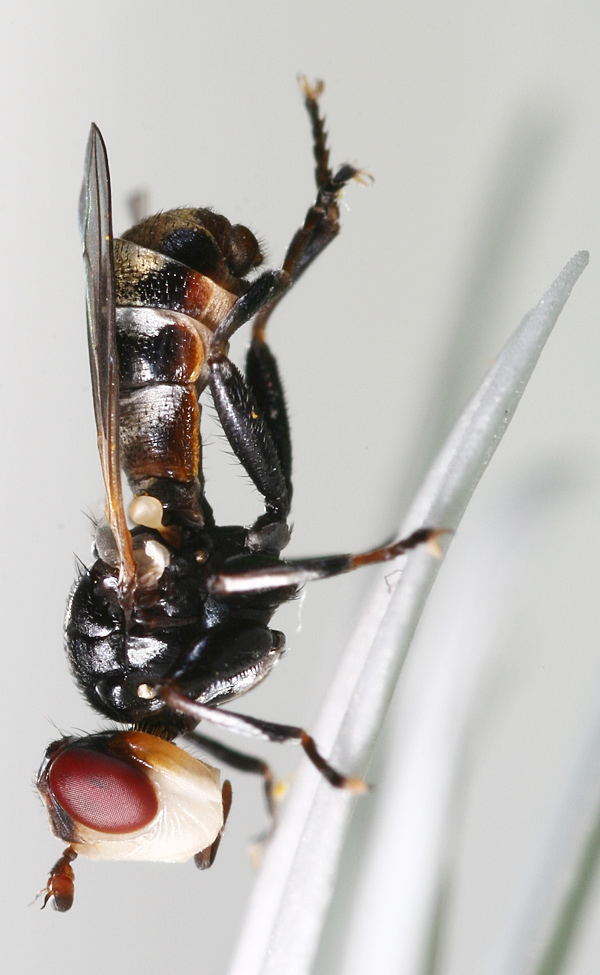 [185.77Kb] Edited by jorgemotalmeida on 03-06-2007 20:33 |
| jorgemotalmeida |
Posted on 02-06-2007 23:52
|
|
Member Location: Viseu - PORTUGAL Posts: 9296 Joined: 05.06.06 |
other view
jorgemotalmeida attached the following image: 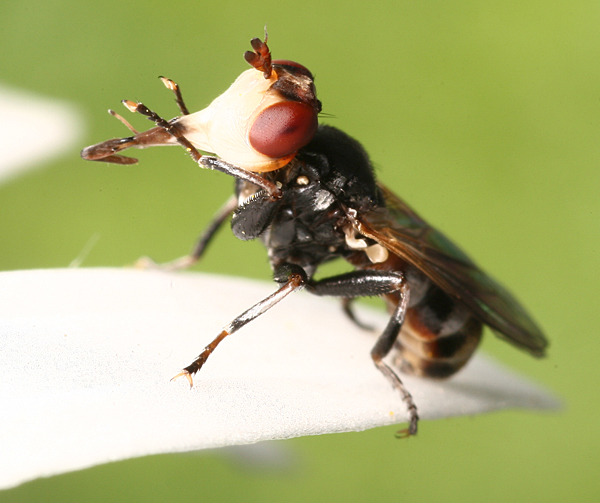 [191.85Kb] |
| jorgemotalmeida |
Posted on 02-06-2007 23:53
|
|
Member Location: Viseu - PORTUGAL Posts: 9296 Joined: 05.06.06 |
other.. 
jorgemotalmeida attached the following image: 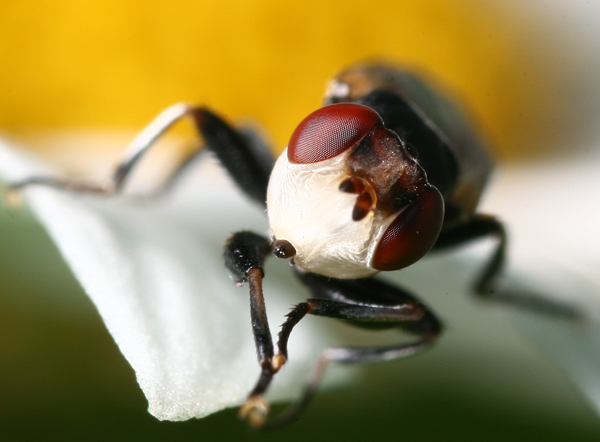 [149.29Kb] |
| jorgemotalmeida |
Posted on 02-06-2007 23:54
|
|
Member Location: Viseu - PORTUGAL Posts: 9296 Joined: 05.06.06 |
other view.
jorgemotalmeida attached the following image: 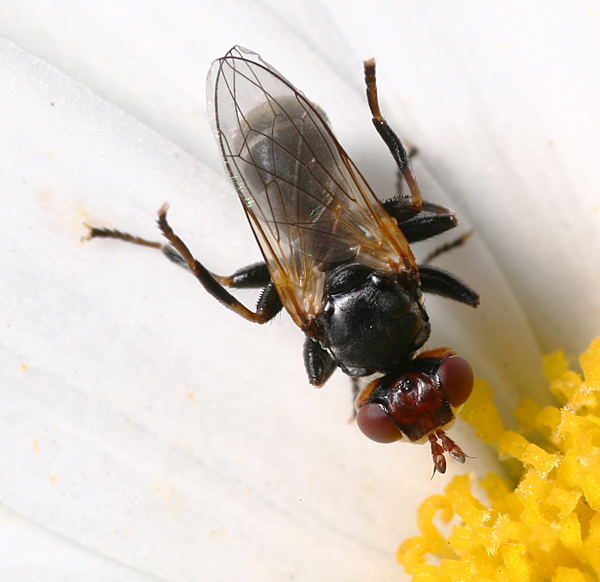 [190.82Kb] |
| jorgemotalmeida |
Posted on 02-06-2007 23:54
|
|
Member Location: Viseu - PORTUGAL Posts: 9296 Joined: 05.06.06 |
other view.
jorgemotalmeida attached the following image: 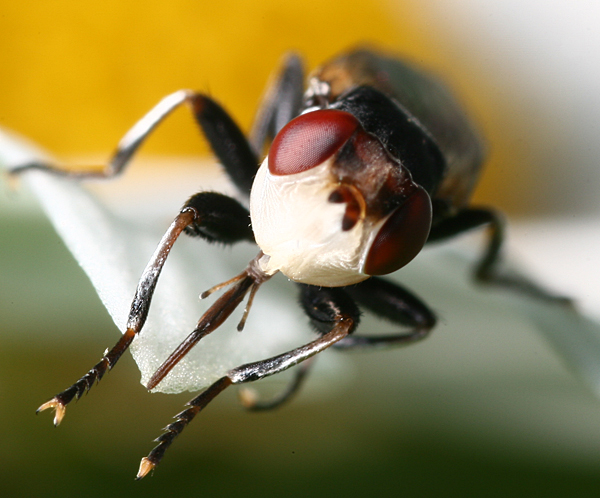 [194.84Kb] |
| jorgemotalmeida |
Posted on 03-06-2007 00:33
|
|
Member Location: Viseu - PORTUGAL Posts: 9296 Joined: 05.06.06 |
other view
jorgemotalmeida attached the following image: 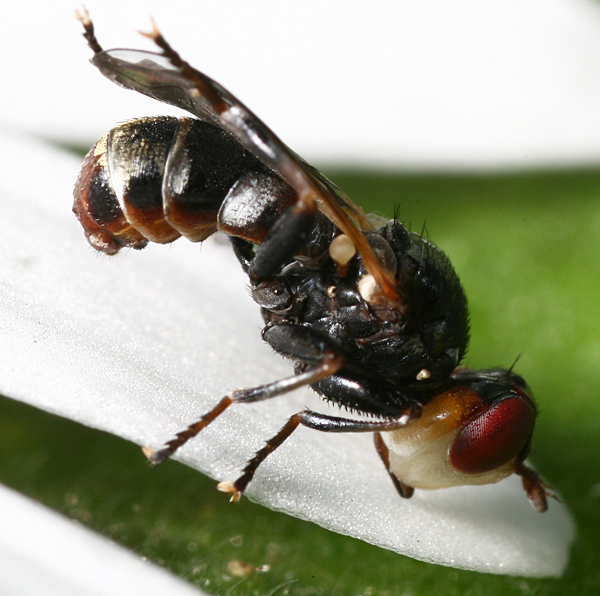 [186.73Kb] |
| jorgemotalmeida |
Posted on 03-06-2007 18:26
|
|
Member Location: Viseu - PORTUGAL Posts: 9296 Joined: 05.06.06 |
no hints for this one? It is a good signal!   |
| David Clements |
Posted on 03-06-2007 19:56
|
|
Member Location: Cardiff, UK Posts: 80 Joined: 21.04.07 |
This is a Myopa, possibly Myopa occulta. |
|
|
|
| jorgemotalmeida |
Posted on 03-06-2007 20:07
|
|
Member Location: Viseu - PORTUGAL Posts: 9296 Joined: 05.06.06 |
what must I look so we can final confirmation? But this seems to be an exception to the rule: "they have dorsal preapical bristle in tibia" -- usually we find it in Myopa. I know there in Nature there are no absolut rules. It likes to be "out-of-law"  |
| jorgemotalmeida |
Posted on 03-06-2007 20:10
|
|
Member Location: Viseu - PORTUGAL Posts: 9296 Joined: 05.06.06 |
if this is really Myopa occulta would be very great.  |
| Zeegers |
Posted on 03-06-2007 20:24
|
|
Member Location: Soest, NL Posts: 19213 Joined: 21.07.04 |
It's Myopa occulta. The spinulae on the tibiae are distinctive, at least according to Seguy. Theo Zeegers |
|
|
|
| jorgemotalmeida |
Posted on 03-06-2007 20:32
|
|
Member Location: Viseu - PORTUGAL Posts: 9296 Joined: 05.06.06 |
occulta in English means hidden/occult. My question: this could be due two hypothesis --- it is rare to spot this fly, so that name for species: occulta - hidden from us, as we can say... or it means that has some characteristic that we can see in all other Myopa and not in this one (perhaps that bristle in tibia absent??). Which of these hypothesis explain much better for "Myopa occulta"? Let me know. Thank you. I wish to have that Seguy key.  This is really an awesome fly. I tried to spot more today, but I didn't see this again. In next time. 
Edited by jorgemotalmeida on 03-06-2007 20:49 |
| Tony Irwin |
Posted on 03-06-2007 20:33
|
|
Member Location: Norwich, England Posts: 7318 Joined: 19.11.04 |
I presume that's spinulae on the femora, Theo? 
Tony ---------- Tony Irwin |
|
|
|
| jorgemotalmeida |
Posted on 03-06-2007 20:36
|
|
Member Location: Viseu - PORTUGAL Posts: 9296 Joined: 05.06.06 |
Tony Irwin wrote: I presume that's spinulae on the femora, Theo?  i think the same.  Femora. Femora.  |
| Kahis |
Posted on 04-06-2007 07:52
|
|
Member Location: Helsinki, Finland Posts: 1999 Joined: 02.09.04 |
jorgemotalmeida wrote: occulta in English means hidden/occult. My question: this could be due two hypothesis --- it is rare to spot this fly, so that name for species: occulta - hidden from us, as we can say... or it means that has some characteristic that we can see in all other Myopa and not in this one (perhaps that bristle in tibia absent??). Which of these hypothesis explain much better for "Myopa occulta"? Let me know. Thank you. Well, at least here in Finland M. occulta is very well hidden. So good in fact, that it has not been found in 150 years. Since it was known from a very small area and no suitable sites remain in this area, it's all but certainly extinct in this country 
Kahis |
| Zeegers |
Posted on 04-06-2007 18:00
|
|
Member Location: Soest, NL Posts: 19213 Joined: 21.07.04 |
I'm so sorry, translating from French to English is not easy when you are dutch. Spinulae on the femora. Theo |
|
|
|
| jorgemotalmeida |
Posted on 04-06-2007 21:40
|
|
Member Location: Viseu - PORTUGAL Posts: 9296 Joined: 05.06.06 |
here goes an amplification almost near 4:1, perhaps 3,5:1 (there is very little dof) The gena is very white as I told before. So it is hard to avoid the flash there. The face looks alien. jorgemotalmeida attached the following image: 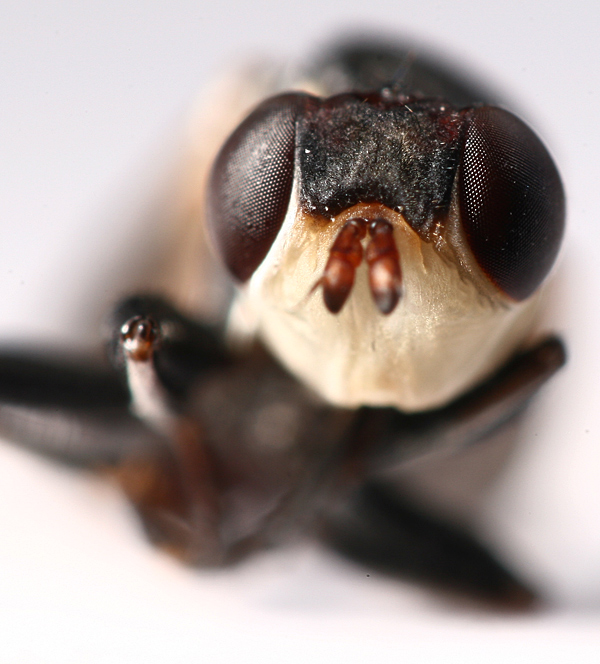 [193.57Kb] |
| Jump to Forum: |













